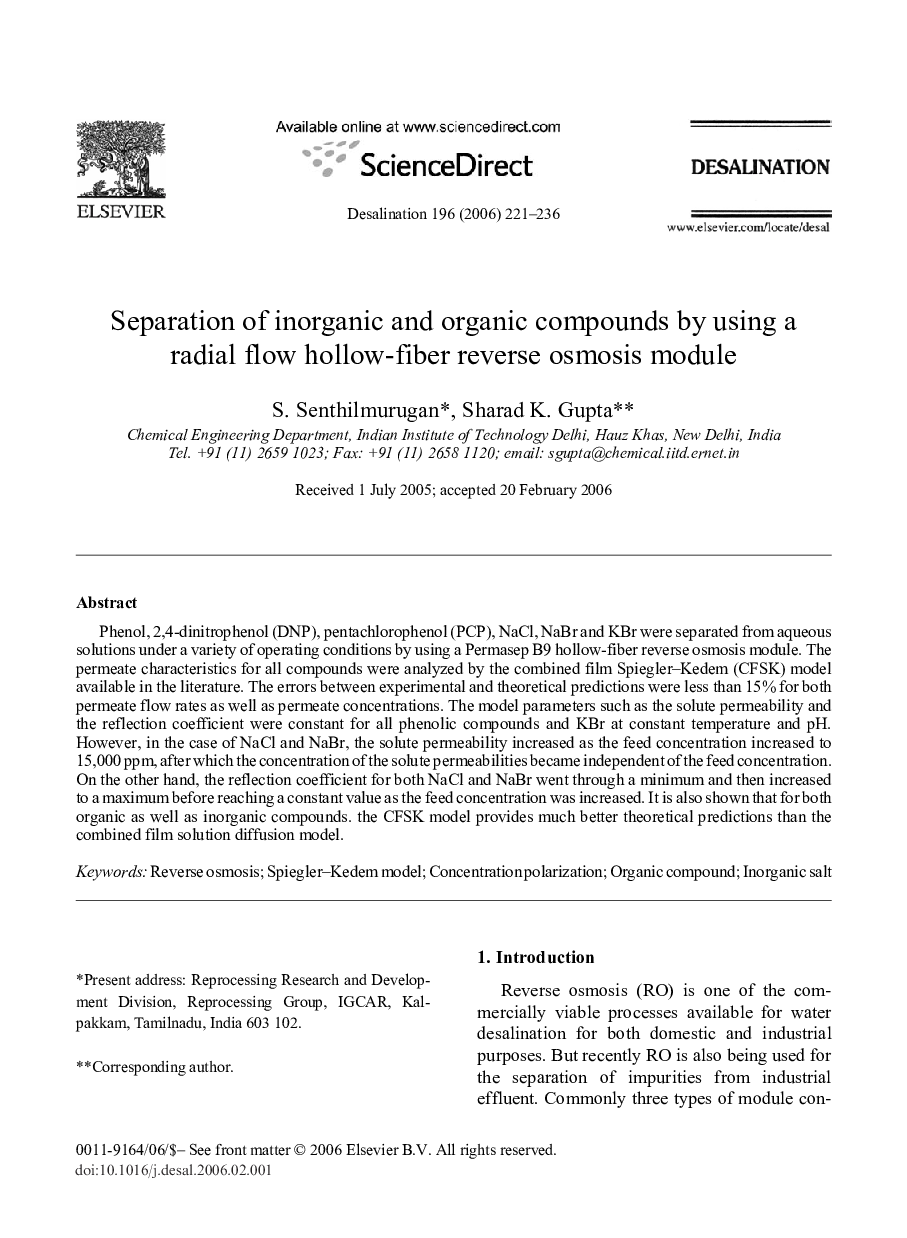| Article ID | Journal | Published Year | Pages | File Type |
|---|---|---|---|---|
| 628891 | Desalination | 2006 | 16 Pages |
Abstract
Phenol, 2,4-dinitrophenol (DNP), pentachlorophenol (PCP), NaCl, NaBr and KBr were separated from aqueous solutions under a variety of operating conditions by using a Permasep B9 hollow-fiber reverse osmosis module. The permeate characteristics for all compounds were analyzed by the combined film Spiegler-Kedem (CFSK) model available in the literature. The errors between experimental and theoretical predictions were less than 15% for both permeate flow rates as well as permeate concentrations. The model parameters such as the solute permeability and the reflection coefficient were constant for all phenolic compounds and KBr at constant temperature and pH. However, in the case of NaCl and NaBr, the solute permeability increased as the feed concentration increased to 15,000 ppm, after which the concentration of the solute permeabilities became independent of the feed concentration. On the other hand, the reflection coefficient for both NaCl and NaBr went through a minimum and then increased to a maximum before reaching a constant value as the feed concentration was increased. It is also shown that for both organic as well as inorganic compounds. the CFSK model provides much better theoretical predictions than the combined film solution diffusion model.
Keywords
Related Topics
Physical Sciences and Engineering
Chemical Engineering
Filtration and Separation
Authors
S. Senthilmurugan, Sharad K. Gupta,
